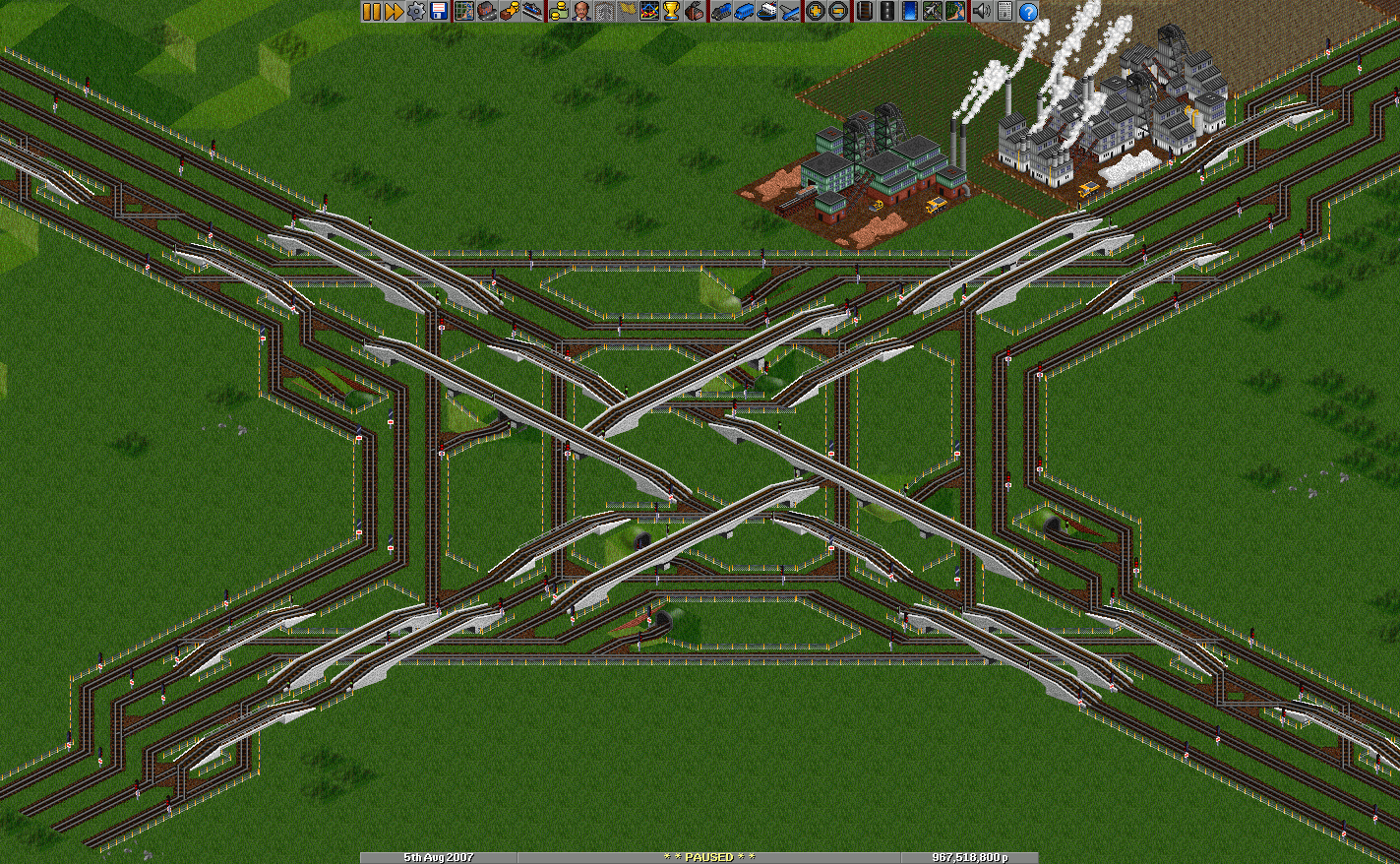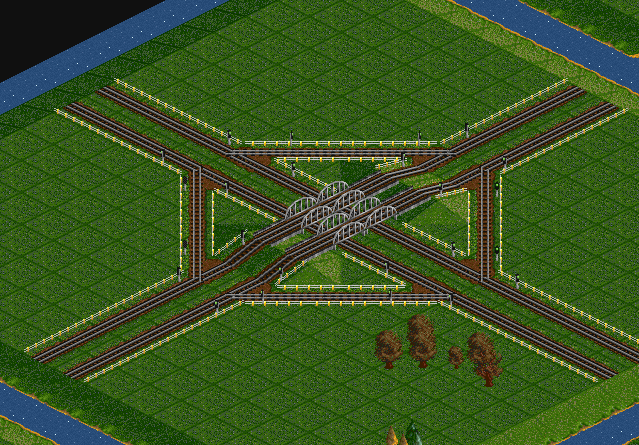

In your first example, the signals are placed badly, in a way that will definitely cause problems. The following here are some general gameplay tips learned from experience with how things have always worked. Note: for larger trainlengths, the radius is always smaller than the trainlength.PBS is Path-Based Signals, so the signal type you are using.
OPENTTD RAILROAD JUNCTIONS FULL
Just ask some experts around for the minimum radius for full speed-curves. This means: If you build curves with 3 tiles length each, the trains won't slow down! For monorail or maglev it's very important to remain at full speed. Depending on the game, we use a certain trainlength. Signs do not cost anything at all - except some pressed keys on your keyboard. To be more concrete: don't do unnecessary tracks, make comments (by using signs) of your ideas. A clean building style! You are not at your own - and this is probably the best thing about #openttdcoop! Unfortunately, most of us can't read your mind and therefore it is best to make a clean building style everyone understands.It is better to build a hub with as many features as possible right at the start rather than heaving a headache in the future. You can get from each direction to any other direction! Since we want to make our railline expandable, we don't want to rethink all the old hubs in the future.On a good junction the Sideline-entry is long enough for one whole train to wait. If it is too long to enter a Sideline it therefore blocks not only the Sideline itself but also the Mainline. Think big! Our trains have a certain length (depending on the current game).On a typical 512x512 map we end up with at least four "Backbone Hubs" (explained later on) and at least eight or even more Sideline Hubs. This - in the end - ensures a fast and comprehensive network!Įvery hub has a name! Not only because we are gifted writers but also because of finding all these hubs in the future. Traffic from stations are bundled to sidelines and via a SLH they are bundled to a massive mainline. SLH's are intended to be fast connection points from sidelines to mainlines. All these entering/leaving trains will slow down other trains - it's some kind of chain reaction. Just imagine a game with 300+ trains and 100+ stations and every station has its own connection to a mainline with high traffic. Make a clean and intelligent building right from the start - it saves you and others later on. The answer is: because it is the simplest thing in the end.

A basic priority is used to accomplish this.īut for now, let us come back to our topic - basic junctions.I know what you are thinking: "Why are they doing these weird things?". On the image above, you see the idea of the balancing: if a Mainline-track is used (which means: a train is on the part the Sideline-Train wants to enter) the signal state is red - and the Sideline-Train chooses the other Mainline-track. An early Loadbalancer - recent concepts are far better but this one already improves the balancing somewhat


 0 kommentar(er)
0 kommentar(er)
